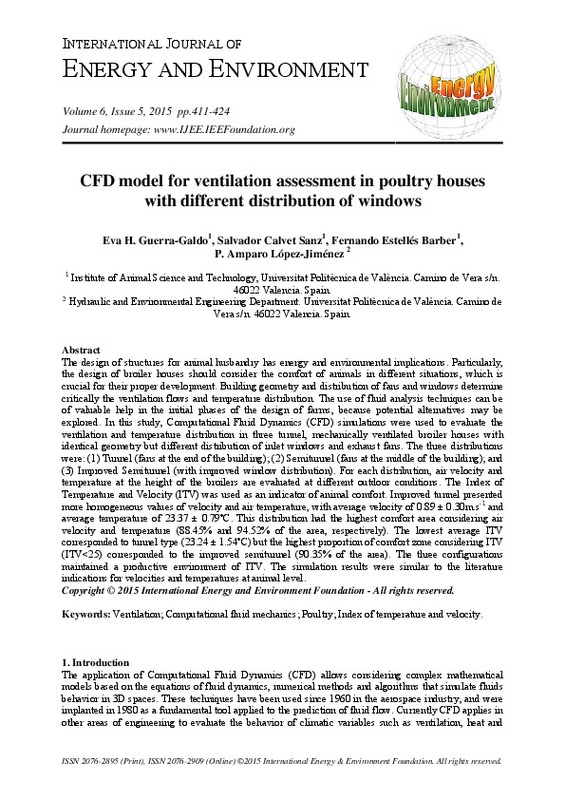JavaScript is disabled for your browser. Some features of this site may not work without it.
Buscar en RiuNet
Listar
Mi cuenta
Estadísticas
Ayuda RiuNet
Admin. UPV
CFD model for ventilation assessment in poultry houses with different distribution of windows
Mostrar el registro completo del ítem
Guerra Galdo, EH.; Calvet Sanz, S.; Estellés Barber, F.; López Jiménez, PA. (2015). CFD model for ventilation assessment in poultry houses with different distribution of windows. International Journal of Energy and Environment. 6(5):411-424. http://hdl.handle.net/10251/62072
Por favor, use este identificador para citar o enlazar este ítem: http://hdl.handle.net/10251/62072
Ficheros en el ítem
Metadatos del ítem
| Título: | CFD model for ventilation assessment in poultry houses with different distribution of windows | |
| Autor: | Guerra Galdo, Eva Hilda | |
| Entidad UPV: |
|
|
| Fecha difusión: |
|
|
| Resumen: |
The design of structures for animal husbandry has energy and environmental implications. Particularly,
the design of broiler houses should consider the comfort of animals in different situations, which is
crucial for ...[+]
|
|
| Palabras clave: |
|
|
| Derechos de uso: | Reconocimiento - Compartir igual (by-sa) | |
| Fuente: |
|
|
| Editorial: |
|
|
| Versión del editor: | http://www.ijee.ieefoundation.org/vol6/issue5/IJEE_01_v6n5.pdf | |
| Descripción: |
|
|
| Tipo: |
|







